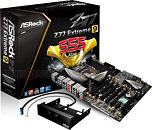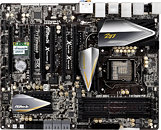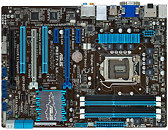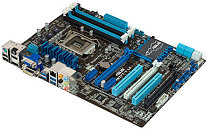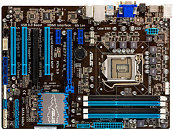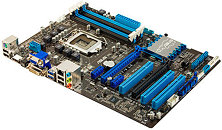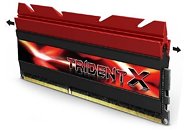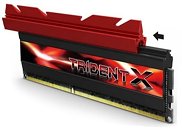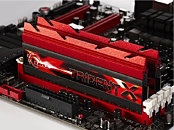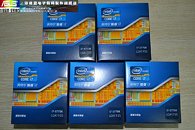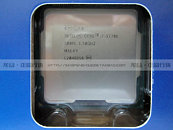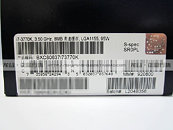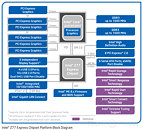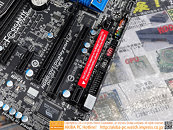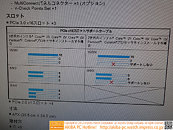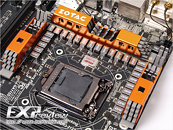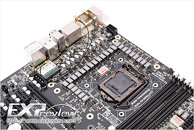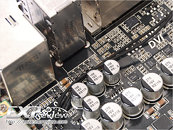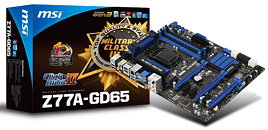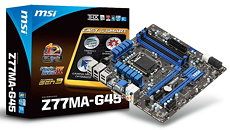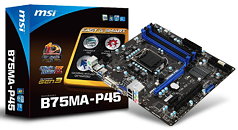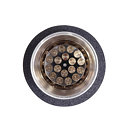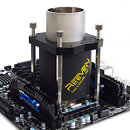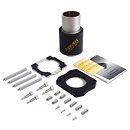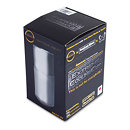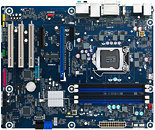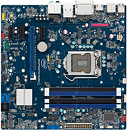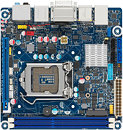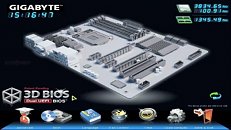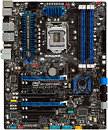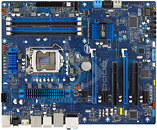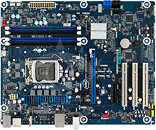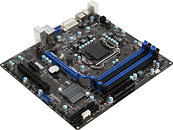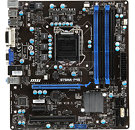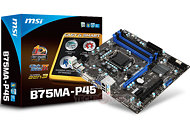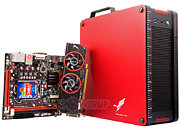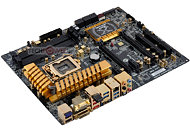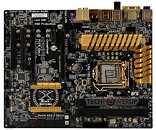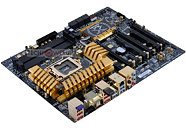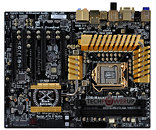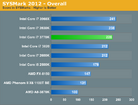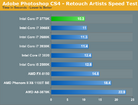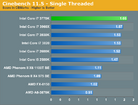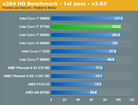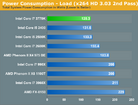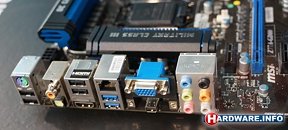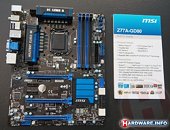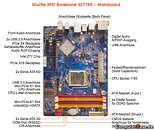Mar 29th, 2025 07:59 EDT
change timezone
Latest GPU Drivers
New Forum Posts
- Small chip on the tempered glass (2)
- Upgrade from a AMD AM3+ to AM4 or AM5 chipset MB running W10? (19)
- Future-proofing my OLED (57)
- Windows 10 Vs 11, Which one too choose? (118)
- What are you playing? (23306)
- RTX 5080 - performance fluctuation (6)
- Did Nvidia purposely gimp the performance of 50xx series cards with drivers (114)
- AMD RX 9070 XT & RX 9070 non-XT thread (OC, undervolt, benchmarks, ...) (71)
- TPU's F@H Team (20414)
- Have you got pie today? (16650)
Popular Reviews
- Sapphire Radeon RX 9070 XT Pulse Review
- Samsung 9100 Pro 2 TB Review - The Best Gen 5 SSD
- ASRock Phantom Gaming B850 Riptide Wi-Fi Review - Amazing Price/Performance
- Assassin's Creed Shadows Performance Benchmark Review - 30 GPUs Compared
- be quiet! Pure Rock Pro 3 Black Review
- Sapphire Radeon RX 9070 XT Nitro+ Review - Beating NVIDIA
- ASRock Radeon RX 9070 XT Taichi OC Review - Excellent Cooling
- Palit GeForce RTX 5070 GamingPro OC Review
- Pulsar Feinmann F01 Review
- AMD Ryzen 7 9800X3D Review - The Best Gaming Processor
Controversial News Posts
- AMD RDNA 4 and Radeon RX 9070 Series Unveiled: $549 & $599 (260)
- MSI Doesn't Plan Radeon RX 9000 Series GPUs, Skips AMD RDNA 4 Generation Entirely (142)
- Microsoft Introduces Copilot for Gaming (124)
- AMD Radeon RX 9070 XT Reportedly Outperforms RTX 5080 Through Undervolting (118)
- NVIDIA Reportedly Prepares GeForce RTX 5060 and RTX 5060 Ti Unveil Tomorrow (115)
- Over 200,000 Sold Radeon RX 9070 and RX 9070 XT GPUs? AMD Says No Number was Given (100)
- NVIDIA GeForce RTX 5050, RTX 5060, and RTX 5060 Ti Specifications Leak (96)
- Retailers Anticipate Increased Radeon RX 9070 Series Prices, After Initial Shipments of "MSRP" Models (90)
News Posts matching #LGA1155
Return to Keyword Browsing
ASRock Launches Z77 Extreme9 Motherboard
Seeing as how some of the newest socket LGA1155 processors, such as the Core i7-3770K, competes with Sandy Bridge-E HEDT platform, and how today's GPUs are beginning to benefit from PCI-Express 3.0 in x8 and x4 configurations, ASRock decided to go beyond its Z77 Fatal1ty Professional, and launched a new Extreme series model, with a focus on features and connectivity. The Z77 Extreme9 from ASRock crams has every square inch of its standard ATX size PCB with features.
To begin with, the Z77 Extreme9 uses a fairly strong 8+4 phase VRM, which is similar to that of the Z77 Extreme6. The CPU VRM MOSFETs are cooled by a fairly big heatsink, which shares its head with a neighbouring heatsink, which cools a PLX PEX8747 PCI-Express 3.0 bridge chip, which takes in the lone PCI-Express 3.0 x16 link from the processor, and drives four of the board's six PCI-Express 3.0 x16 long slots, enabling 3-way and 4-way SLI/CrossFireX capability. The other slots are electrical PCI-Express 2.0, and wired to the Z77 PCH.
To begin with, the Z77 Extreme9 uses a fairly strong 8+4 phase VRM, which is similar to that of the Z77 Extreme6. The CPU VRM MOSFETs are cooled by a fairly big heatsink, which shares its head with a neighbouring heatsink, which cools a PLX PEX8747 PCI-Express 3.0 bridge chip, which takes in the lone PCI-Express 3.0 x16 link from the processor, and drives four of the board's six PCI-Express 3.0 x16 long slots, enabling 3-way and 4-way SLI/CrossFireX capability. The other slots are electrical PCI-Express 2.0, and wired to the Z77 PCH.

ECS X77H2-A3 Motherboard Pictured
ECS revealed its newest value-segment LGA1155 motherboard based on the Z77 Express chipset, the X77H2-A3. Pictured below, the X77H2-A3 is a variation of the Z77H2-A3, with ECS' Super Alloy Chokes powering the CPU VRM, an all solid-state capacitor design, golden-colored VRM and PCH heatsinks, and slightly darker piano-black PCB. Besides these four, the X77H2-A3 is identical to the Z77H2-A3. It features a 4+1 phase CPU VRM, single PCI-Express 3.0 x16 expansion slot, two SATA 6 Gb/s, four SATA 3 Gb/s, four USB 3.0 ports (two front-panel, two rear), and display outputs that include DVI and D-Sub. Expect this model to be slightly pricier than its cousin.

ASUS Readies Two Budget P8Z77-V Series Motherboards
ASUS is working on two new value P8Z77-V series socket LGA1155 motherboards based on the Intel Z77 Express chipset. These are the P8Z77-V LK and P8Z77-V LX. The two are designed to occupy price-points well under US $150. The P8Z77-V LK is the costlier of the two, featuring three PCI-Express 3.0 x16 slots (x16/NC/NC or x8/x8/NC or x8/x4/x4), 6-phase CPU VRM, six USB 3.0 ports, two SATA 6 Gb/s and four SATA 3 Gb/s internal ports; and display outputs that include DVI, D-Sub, HDMI, and DisplayPort.
The P8Z77-V LX is probably ASUS' cheapest Z77 motherboard, with the same 6-phase CPU VRM, but a single PCI-Express 3.0 x16 slot wired to the CPU, a PCI-Express 2.0 x16 (electrical x4) wired to the Z77 PCH, three PCI, two PCI-Express 2.0 x1, all internal ports wired to the PCH (2x SATA 6 Gb/s, 4x SATA 3 Gb/s), and a slightly slimmer connectivity loadout that includes 6-channel HD audio, four USB 3.0 ports (2x rear, 2x front-panel, all from PCH), and display outputs that include DVI, D-Sub, and HDMI.
The P8Z77-V LX is probably ASUS' cheapest Z77 motherboard, with the same 6-phase CPU VRM, but a single PCI-Express 3.0 x16 slot wired to the CPU, a PCI-Express 2.0 x16 (electrical x4) wired to the Z77 PCH, three PCI, two PCI-Express 2.0 x1, all internal ports wired to the PCH (2x SATA 6 Gb/s, 4x SATA 3 Gb/s), and a slightly slimmer connectivity loadout that includes 6-channel HD audio, four USB 3.0 ports (2x rear, 2x front-panel, all from PCH), and display outputs that include DVI, D-Sub, and HDMI.

Shuttle Launches X79 and Z77-based Barebones
Barebones mini PCs expert Shuttle Computer launched its first barebones featuring Intel Z77 Express chipset, ready for 3rd generation "Ivy Bridge" Core processors in the LGA1155 package, while retaining support for every LGA1155 "Sandy Bridge" processor launched till date. Shuttle also launched an Intel X79-based mini PC barebone, which supports Core i7 "Sandy Bridge-E" processors.
Called the SZ77R5, the Z77 barebone features four DDR3 DIMM slots supporting 32 GB of dual-channel DDR3-1600 MHz memory, expansion slots that include one PCI-Express 3.0 x16, one PCI-Express 2.0 x4 and one mPCIe; two SATA 6 Gb/s, two SATA 3 Gb/s ports, one eSATA 3 Gb/s, and one mSATA; four USB 3.0 ports, gigabit Ethernet, and 8-channel HD audio. Its chassis features two 5.25" and one 3.5" drive bays, front-panel that includes two of the four USB 3.0 ports, a USB 2.0 port with "fast charging" (high current), and front-panel HD audio. To power the machine, a 500W 80 Plus-compliant PSU is included. The SZ77R5 measures 332 x 216 x 198 mm (WxDxH). It will be priced around 32,800 JPY (US $404).
Called the SZ77R5, the Z77 barebone features four DDR3 DIMM slots supporting 32 GB of dual-channel DDR3-1600 MHz memory, expansion slots that include one PCI-Express 3.0 x16, one PCI-Express 2.0 x4 and one mPCIe; two SATA 6 Gb/s, two SATA 3 Gb/s ports, one eSATA 3 Gb/s, and one mSATA; four USB 3.0 ports, gigabit Ethernet, and 8-channel HD audio. Its chassis features two 5.25" and one 3.5" drive bays, front-panel that includes two of the four USB 3.0 ports, a USB 2.0 port with "fast charging" (high current), and front-panel HD audio. To power the machine, a 500W 80 Plus-compliant PSU is included. The SZ77R5 measures 332 x 216 x 198 mm (WxDxH). It will be priced around 32,800 JPY (US $404).

Intel Xeon E3 "Ivy Bridge" Processors Start Shipping in June
Intel is expected to start shipping Xeon E3 processors based on 22 nm "Ivy Bridge" silicon within June, according to a DigiTimes report. A key feature of the new Xeon chips driving its advent is support for PCI-Express 3.0, which could greatly increase bandwidth for compatible add-on cards and controllers. Ivy Bridge allows PCI-Express lanes from the processor root complex to be split into x16, x8, and even x4 links, which greatly increase bandwidth from previous-generation PCI-Express 2.0 bus. Built in the LGA1155 package, the new Xeon chips will be compatible with existing platforms that run Xeon Sandy Bridge processors, as well as new lines of server/workstation motherboards that feature PCI-Express 3.0 expansion. We know from a slightly older report that Intel will launch low-voltage Xeon processors around this time.

G.Skill Unveils Trident X Series DDR3-2400 MHz Modular-Heatsink Overclocking Memory
G.Skill unveiled its newest line of memory for extreme overclocking, the Trident X. Its launch is timed to follow that of Intel's Core "Ivy Bridge" processor family, and is optimized for 7-series chipset motherboards (due to their support of latest Intel XMP 1.3 specification). Pictured below is what Trident X series modules look like: a black PCB with a slightly long black metal heatsink, which has a detachable crown heatsink (red). One can notice a slot for heat pipes in the juncture between the crown heatsink and the module's main heatsink.
Aesthetically, the Trident X series modules don a black+red color scheme, which goes well with the black+red motherboard in the background (in the press-shot). Pictured below are the DDR3-2400 MHz (PC3-19200) modules in dual-channel configuration. The XMP profile runs the module at its 2400 MHz DDR (1200 MHz real) speed, with timings of 10-12-12-31T, and DRAM voltage of 1.65V. The modules will be available in various other speed/timing configurations, and in densities of 4 GB and 8 GB, making up for 8 GB and 16 GB dual-channel kits, for the new "Ivy Bridge" platform; 16 GB and 32 GB quad-channel kits for the Sandy Bridge-E platform. The older Sandy Bridge LGA1155 platform might not be 100% compatible, since it lacks XMP 1.3 support. G.Skill Trident X will be formally announced on May 4.
Aesthetically, the Trident X series modules don a black+red color scheme, which goes well with the black+red motherboard in the background (in the press-shot). Pictured below are the DDR3-2400 MHz (PC3-19200) modules in dual-channel configuration. The XMP profile runs the module at its 2400 MHz DDR (1200 MHz real) speed, with timings of 10-12-12-31T, and DRAM voltage of 1.65V. The modules will be available in various other speed/timing configurations, and in densities of 4 GB and 8 GB, making up for 8 GB and 16 GB dual-channel kits, for the new "Ivy Bridge" platform; 16 GB and 32 GB quad-channel kits for the Sandy Bridge-E platform. The older Sandy Bridge LGA1155 platform might not be 100% compatible, since it lacks XMP 1.3 support. G.Skill Trident X will be formally announced on May 4.

Core i7-3770K Retail Boxes Pictured, TDP 95W, Overclocks Worse Than Sandy Bridge?
Here are the first pictures of retail boxes of Intel's Core i7-3770K "Ivy Bridge" processors in the LGA1155 package. Pictured below are boxes sourced from a Chinese distributor. Regional branding aside, the box-art hasn't changed from that of the 2nd Generation Core processor family, even the die-shot CGI in the center hasn't changed, which is a missed opportunity. Intel could have used art inspired by the Ivy Bridge silicon, which could have helped identify the new chips easier. The box simply marks the model number "3770K" and socket type "LGA1155" on the key sticker.
The side sticker is where the action is. We know from countless earlier reports, including Intel's RetailEdge marketing material that the TDP rating of "Ivy Bridge" quad-core parts, including the i7-3770K, was rated to be 77W. The sticker on retail i7-3770K, however, tells a different story. The TDP is rated at 95W, on par with previous-generation parts such as i7-2700K. The S-spec number is revealed to be "SR0PL". Before such an important CPU launch as "Ivy Bridge", it's hard to control pre-launch proliferation of retail parts to people who are not NDA signatories. Such people have put the i7-3770K through overclocking, and voices are getting louder that the i7-3770K is a worse overclocker than previous-generation "Sandy Bridge". The chip was found to get too hot, too soon, when overclocking.
The side sticker is where the action is. We know from countless earlier reports, including Intel's RetailEdge marketing material that the TDP rating of "Ivy Bridge" quad-core parts, including the i7-3770K, was rated to be 77W. The sticker on retail i7-3770K, however, tells a different story. The TDP is rated at 95W, on par with previous-generation parts such as i7-2700K. The S-spec number is revealed to be "SR0PL". Before such an important CPU launch as "Ivy Bridge", it's hard to control pre-launch proliferation of retail parts to people who are not NDA signatories. Such people have put the i7-3770K through overclocking, and voices are getting louder that the i7-3770K is a worse overclocker than previous-generation "Sandy Bridge". The chip was found to get too hot, too soon, when overclocking.

Intel Plans Low Power Xeon Processors for Micro-Servers This Quarter, Centerton in 2H
Intel is planning to launch a line of low-power Xeon processors in Q2-2012, which will be the company's first Xeon processors built on the 22 nm fab process, with 3D transistors. It is quite likely that these chips are built in the LGA1155 package, however Intel is only releasing low-power variants, which ensures performance-segment Xeon E3-1200 family isn't disturbed, and more importantly, it doesn't have to pull out the best bins of its 22 nm Ivy Bridge silicon just yet (for use in higher clock-speed Xeon parts).
Intel has another emerging problem. With the advent of "micro-servers" (low power independent servers in high-density data-centers, which provide better cost-performance and manageability than virtual servers), ARM processor architecture is making inroads to the enterprise computing market. Intel's answer to that is refining the same silicon that goes into making low-power Atom processors, and making it enterprise-grade. This part is codenamed "Centerton", and Intel expects an entire micro-server platform based on these chips to be out in the second half of 2012.
Intel has another emerging problem. With the advent of "micro-servers" (low power independent servers in high-density data-centers, which provide better cost-performance and manageability than virtual servers), ARM processor architecture is making inroads to the enterprise computing market. Intel's answer to that is refining the same silicon that goes into making low-power Atom processors, and making it enterprise-grade. This part is codenamed "Centerton", and Intel expects an entire micro-server platform based on these chips to be out in the second half of 2012.

Sapphire Set to Launch Z77 Mainboard
SAPPHIRE Technology, a leading manufacturer and global supplier of graphics, mainboard and multimedia solutions has just announced a new mainboard developed to support the latest family of CPUs from Intel.
The SAPPHIRE Pure Platinum Z77/K is a full ATX sized board that supports the latest generation Intel i7/i5/i3 processor family using socket LGA1155. It includes full implementation of the chipset features, including multiple PCI-Express 3.0 Gen3, USB 3.0, SATA 6G and extensive I/O support. Four dual channel memory sockets are provided, supporting up to 16 GB of DDR3 memory with current technology (32 GB max when suitable modules become available).
The SAPPHIRE Pure Platinum Z77/K is a full ATX sized board that supports the latest generation Intel i7/i5/i3 processor family using socket LGA1155. It includes full implementation of the chipset features, including multiple PCI-Express 3.0 Gen3, USB 3.0, SATA 6G and extensive I/O support. Four dual channel memory sockets are provided, supporting up to 16 GB of DDR3 memory with current technology (32 GB max when suitable modules become available).

Third Long PCIe Slot On High-End Z77 Boards Wired to CPU, Works Only with Ivy Bridge
It turns out that the "third" long (physical x16, electrical x4) PCI-Express slot on most higher-end Z77 chipset-based motherboards, across vendors, are wired to the CPU, and not the Z77 PCH, as the media assumed. Early buyers of these motherboards were greeted by an informative sticker stuck to the third slot, which tells them that to use the third slot, a 3rd Generation Core "Ivy Bridge" processor must be installed, although the motherboard very much supports 2nd Generation Core "Sandy Bridge" processors.
This can be explained by taking a close look at the block diagram of Intel Z77 Express system. Z77, in combination with "Ivy Bridge" processors, allows the CPU root complex to drive three devices. Its single PCI-Express x16 link can be arranged in three ways: x16/NC/NC; x8/x8/NC; and x8/x4/x4. As you can see, the third long slot is taken into the configuration. Intel figured out that since PCI-Express 3.0 x4 offers bandwidth comparable to PCI-Express 1.0 x16 to gen 3-compliant graphics cards, it's wise if the third electrical x4 slot is also wired to the CPU's PCIe root complex. This renders most high-end LGA1155 motherboards with such CPU-driven third x16 (x4) slots 3-way SLI/CrossFireX-capable. Sweet.
This can be explained by taking a close look at the block diagram of Intel Z77 Express system. Z77, in combination with "Ivy Bridge" processors, allows the CPU root complex to drive three devices. Its single PCI-Express x16 link can be arranged in three ways: x16/NC/NC; x8/x8/NC; and x8/x4/x4. As you can see, the third long slot is taken into the configuration. Intel figured out that since PCI-Express 3.0 x4 offers bandwidth comparable to PCI-Express 1.0 x16 to gen 3-compliant graphics cards, it's wise if the third electrical x4 slot is also wired to the CPU's PCIe root complex. This renders most high-end LGA1155 motherboards with such CPU-driven third x16 (x4) slots 3-way SLI/CrossFireX-capable. Sweet.

ZOTAC Unveils ZT-Z77-U1D SuperOverclock High-End Motherboard
ZOTAC unveiled a monster LGA1155 motherboard aimed at professional overclockers, and based on the new Intel Z77 Express chipset, the ZT-Z77-U1D. Pictured below, the designers' focus was evidently on giving the motherboard a very strong VRM, apart from just enough expansion and connectivity features for 2-way multi-GPU setups. To begin with, the LGA1155 socket is powered by a 27-phase VRM, which consists of AIO ferrite-core solid-state chokes, DrMOS, tantalum capacitors, and a super-ML multiphase capacitor to condition power. The VRM is controlled by a VRD12-compliant controller.
The LGA1155 socket is wired to four DDR3 DIMM slots, supporting dual-channel DDR3-2133+ MHz memory, and two PCI-Express 3.0 x16 slots (x8/x8, when both are populated). Other expansion slots include four PCI-Express 2.0 x1, wired to the Z77 PCH. All six SATA ports from the PCH are assigned as internal ports, that's two SATA 6 Gb/s, and four SATA 3 Gb/s. Display connectivity includes DVI, HDMI, and DisplayPort. Other connectivity includes 8+2 channel HD audio, 802.11 b/g/n, Bluetooth 3.0, gigabit Ethernet, six USB 3.0 ports (two on the rear panel, four via headers), and a number of USB 2.0 ports.
The LGA1155 socket is wired to four DDR3 DIMM slots, supporting dual-channel DDR3-2133+ MHz memory, and two PCI-Express 3.0 x16 slots (x8/x8, when both are populated). Other expansion slots include four PCI-Express 2.0 x1, wired to the Z77 PCH. All six SATA ports from the PCH are assigned as internal ports, that's two SATA 6 Gb/s, and four SATA 3 Gb/s. Display connectivity includes DVI, HDMI, and DisplayPort. Other connectivity includes 8+2 channel HD audio, 802.11 b/g/n, Bluetooth 3.0, gigabit Ethernet, six USB 3.0 ports (two on the rear panel, four via headers), and a number of USB 2.0 ports.

ASUS Launches the Maximus V GENE Republic of Gamers Motherboard
Now in its fifth generation, ASUS ROG (Republic of Gamers) has launched its Maximus V Series motherboards with the Maximus V GENE. This micro-ATX powerhouse is built using the latest Intel Z77 chipset, which supports Intel's latest LGA1155 processors. Featuring full PCI-Express Gen-3 capabilities with Intel's 3rd Generation processor the Republic of Gamers team equips the Maximus V GENE with exclusive features such as the Extreme Engine DIGI+ II power control design, SupremeFX III gaming audio, Intel Ethernet with ROG GameFirst software and the newly added mPCIe Combo card.
Give Your PC A Power Up With The ROG Exclusive mPCIe Combo Card
The mPCIe Combo card is a new innovation by the ROG team, combining the twin functions of mPCIe with mSATA into a single, extensible add-in card that still allows full use of the PCI-Express slots for multi-GPU graphics. With the addition of an mSATA SSD for use with Intel Smart Response Technology or simply installing the entire OS, this frees up standard SATA ports for other uses. The combination of a standard mPCIe socket on the other side allows unique upgrades such as WiFi, Bluetooth, 3G/4G, GPS and other connectivity.
Give Your PC A Power Up With The ROG Exclusive mPCIe Combo Card
The mPCIe Combo card is a new innovation by the ROG team, combining the twin functions of mPCIe with mSATA into a single, extensible add-in card that still allows full use of the PCI-Express slots for multi-GPU graphics. With the addition of an mSATA SSD for use with Intel Smart Response Technology or simply installing the entire OS, this frees up standard SATA ports for other uses. The combination of a standard mPCIe socket on the other side allows unique upgrades such as WiFi, Bluetooth, 3G/4G, GPS and other connectivity.

MSI Announces All New Intel 7 Series Mainboards
MSI, the manufacturer of World's fastest mainboard and graphics card is happy to announce the availability of the new MSI Intel 7 Series mainboards for the LGA1155 socket, powered by MSI's renowned Military Class III components.
The new Intel Z77, H77 and B75 chipset based mainboards support both 2nd Generation Intel Core CPUs as well as the upcoming 3rd Generation Intel Core CPUs. Built on this basis of Quality components and technology the MSI Intel 7 series mainboards have overclocking features to match with OC Genie II. Not only does OC Genie II enhance CPU, Memory and hard-drive speed but now, in combination with Lucid Virtu MVP, also Discrete DirectX 11 Graphics performance can be boosted! Well-known for its power saving hardware features such as Active Phase Switching (APS) and DrMOS II, MSI Intel 7 series mainboards can combine its performance with best-in-class power saving. MSI's Intel 7 series mainboards are truly one of the most well-rounded mainboards ever created and will surely find its way in many PC builds.
The new Intel Z77, H77 and B75 chipset based mainboards support both 2nd Generation Intel Core CPUs as well as the upcoming 3rd Generation Intel Core CPUs. Built on this basis of Quality components and technology the MSI Intel 7 series mainboards have overclocking features to match with OC Genie II. Not only does OC Genie II enhance CPU, Memory and hard-drive speed but now, in combination with Lucid Virtu MVP, also Discrete DirectX 11 Graphics performance can be boosted! Well-known for its power saving hardware features such as Active Phase Switching (APS) and DrMOS II, MSI Intel 7 series mainboards can combine its performance with best-in-class power saving. MSI's Intel 7 series mainboards are truly one of the most well-rounded mainboards ever created and will surely find its way in many PC builds.
Reeven RECC-01 Extreme Cooling Cup Launched
First unveiled this January, Reeven's extreme-cooling pot (model: RECC-01) launched in various markets. In Japan, it is being marketed by Scythe. Measuring 70 x 70 x 160 mm (WxDxH), and weighing 900 g, the RECC-01 is a liquid nitrogen or dry-ice evaporator. Aluminum makes up most of its body, while nickel-plated copper makes up its base. Its base dissipation surface has 18 circular pits. An AEROFLEX polymer insulation sleeve is included. Also included are a retention module supporting Intel sockets LGA2011, LGA1155/LGA1156, LGA1366 and LGA775; and AMD sockets FM1/AM3+/AM3/AM2+/AM2; and a thermal probe port. It is priced at 19,980 JPY (US $242).

More Intel Desktop Board Media Series Motherboards Pictured
Intel activated product pages of nearly all its upcoming Desktop Board products based on 7-series chipsets. Last week, we were treated to detailed pictures of Intel's Z77 chipset-based Desktop Board products. Now we move on to other Desktop Board Media Series motherboards, those based on Intel's other 7-series client chipset the H77. Pin-compatible with Z77, Intel's H77 chipset provides nearly all features of its sibling, with the exception of overclocking. So motherboard designers needn't dedicate resources to implementing strong VRM designs on their H77 products, and can instead focus on other features such as connectivity and expansion.

GIGABYTE Unveils New Version 3D BIOS with Dual UEFI BIOS Setup Program
GIGABYTE arrived late to the UEFI party, sticking to AwardBIOS workaround like HybridEFI, but when it did, it did with a bang. The company launched its socket LGA2011 motherboard lineup with 3D BIOS, a firmware setup program that takes advantage of several GUI elements that are lacking in many of the competitors' graphical UEFI BIOS setup programs. GIGABYTE launched a newer version of its 3D BIOS setup program, which features a more polished, function-oriented user-interface.
To begin with, the true-color 3D image of the motherboard is replaced by a single solid-color 3D render of the board, so the focus of the user is on components that can be configured, rather than useless visual details. Like with the older version, configurable components on the 3D render can be clicked, to pop-up relevant config pages. The 3D render can be "viewed" from different angles, bringing into perspective the various configurable components.
To begin with, the true-color 3D image of the motherboard is replaced by a single solid-color 3D render of the board, so the focus of the user is on components that can be configured, rather than useless visual details. Like with the older version, configurable components on the 3D render can be clicked, to pop-up relevant config pages. The 3D render can be "viewed" from different angles, bringing into perspective the various configurable components.

Intel Unveils New Z77 Motherboards
Intel silently enabled the product pages of several of its 7-series chipset-based LGA1155 motherboards, including three based on the Z77 Express. These include the Extreme Series DZ77GA-70K, Media Series DZ77BH-55K, and Media Series DZ77SL-50K. The DZ77GA-70K is a top-tier model that's built for built for heavily-overclocked gaming PCs. Intel paid due attention to areas such as a strong VRM, and a broad range of connectivity options. With power-delivery, we spy a 10+2 phase VRM backed by Intel's phase-shedding technology. Apart from four DDR3 DIMM slots, the LGA1155 socket is wired to two PCI-Express 3.0 x16 slots (x8/x8, when both are populated).
Other expansion slots on the DZ77GA-70K include one open-ended PCI-Express 2.0 x4, two PCI-Express 2.0 x1, and two legacy PCI. To ensure there are sufficient PCIe lanes for these slots, and the plethora of third-party onboard devices, Intel implemented a PLX PCI-Express bridge chip that increases the lane budget of the board. Storage connectivity includes four SATA 6 Gb/s (two from the PCH, two from third-party controller), four SATA 3 Gb/s, and one eSATA.
Other expansion slots on the DZ77GA-70K include one open-ended PCI-Express 2.0 x4, two PCI-Express 2.0 x1, and two legacy PCI. To ensure there are sufficient PCIe lanes for these slots, and the plethora of third-party onboard devices, Intel implemented a PLX PCI-Express bridge chip that increases the lane budget of the board. Storage connectivity includes four SATA 6 Gb/s (two from the PCH, two from third-party controller), four SATA 3 Gb/s, and one eSATA.

Scythe Grand Kama Cross CPU Cooler Goes Rev. B
Japanese cooling expert Scythe announcing a new revision of the Top-Flow CPU cooler Grand Kama Cross. New Rev. B of the x-shaped cooler comes with reliable quality and performance for the same price as prior version. Main improvement is the compatibility to the new enthusiast socket LGA2011 from Intel. Furthermore Socket compatibility list includes latest Intel socket LGA1155, LGA1156, LGA775, LGA1366 as well as AMD socket 754, 939, 940, AM2, AM2+, AM3, AM3+ and FM1.
Well-proven Top-Flow design of grand Kama Cross Rev. B utilizes the created airflow to additionally cool surrounding components on the motherboard. Curved aluminum fin structure deflects the airflow, which has a positive influence on temperatures of Voltage regulator modules, chipset and RAM. Efficient airflow is achieved by the pre-assembled 140 mm axial fan. Scythe Slip Stream 140 PWM fan comes with PWN support and allows stepless fan speed adjustments from 500 to 1.300 RPM.
Well-proven Top-Flow design of grand Kama Cross Rev. B utilizes the created airflow to additionally cool surrounding components on the motherboard. Curved aluminum fin structure deflects the airflow, which has a positive influence on temperatures of Voltage regulator modules, chipset and RAM. Efficient airflow is achieved by the pre-assembled 140 mm axial fan. Scythe Slip Stream 140 PWM fan comes with PWN support and allows stepless fan speed adjustments from 500 to 1.300 RPM.

MSI B75MA-P45 Motherboard Detailed
MSI released details about its upcoming value socket LGA1155 motherboard, the B75MA-P45. MSI finds the B75 PCH a worthy option over the current-generation H61 PCH, and could hence price its B75-based motherboards competitively, to capture the entry-level LGA1155 market. The B75MA-P45 comes with out of the box support for 22 nm "Ivy Bridge" Core processors, apart from current-generation "Sandy Bridge" ones. The B75MA-P45 packs a simple 5-phase VRM to power the LGA1155 CPU. The CPU is wired to four DDR3 DIMM slots, supporting dual-channel DDR3-1600 MHz memory.
Expansion slots include one PCI-Express 3.0 x16, one PCI-Express 2.0 x1, and a legacy PCI. The legacy PCI logic is reintegrated with the PCH, and so the board doesn't use any bridge chips, further, since USB 3.0 and SATA 6 Gb/s are integrated with the PCH, MSI didn't add third-party controllers handling the two. SATA connectivity includes one SATA 6 Gb/s, and five SATA 3 Gb/s. The PCH gives out four USB 3.0 ports, two of which are found on the rear panel, two via internal header. Display connectivity includes DVI and D-Sub. 6-channel HD audio, gigabit Ethernet, and legacy PS/2 connectors complete the package. The board is driven by UEFI firmware (5 MB ME 8.0), with a graphical setup program. The B75MA-P45 is said to capture a price-point under US $100.
Expansion slots include one PCI-Express 3.0 x16, one PCI-Express 2.0 x1, and a legacy PCI. The legacy PCI logic is reintegrated with the PCH, and so the board doesn't use any bridge chips, further, since USB 3.0 and SATA 6 Gb/s are integrated with the PCH, MSI didn't add third-party controllers handling the two. SATA connectivity includes one SATA 6 Gb/s, and five SATA 3 Gb/s. The PCH gives out four USB 3.0 ports, two of which are found on the rear panel, two via internal header. Display connectivity includes DVI and D-Sub. 6-channel HD audio, gigabit Ethernet, and legacy PS/2 connectors complete the package. The board is driven by UEFI firmware (5 MB ME 8.0), with a graphical setup program. The B75MA-P45 is said to capture a price-point under US $100.
Thunderbolt To Become Standard for PC in 2013, Optical at That
Towards the end of 2012, Intel will alter Thunderbolt specification from a copper wire-based interconnect to a fiber-optic or photonic interconnect. An analysis by DigiTimes which takes into account information by industry sources, states that Thunderbolt will become standard for PCs only in 2013, and that too the optical one. This comes even as copper wire-based Thunderbolt is beginning to feature on some high-end socket LGA1155 motherboards based on Intel 7-series chipset.
Thunderbolt will get its big push in 2013, when the port will be standard on mainstream desktops and notebooks by OEM majors such as Lenovo, and several PC motherboard vendors, such as ASUS. The optical Thunderbolt IO, apart from allowing greater cable-lengths than 6 m (a limitation of copper-wire Thunderbolt), could push bandwidth greater than 10 Gbps, as a possible incentive for the industry to facilitate the transition to the optical variant.
Thunderbolt will get its big push in 2013, when the port will be standard on mainstream desktops and notebooks by OEM majors such as Lenovo, and several PC motherboard vendors, such as ASUS. The optical Thunderbolt IO, apart from allowing greater cable-lengths than 6 m (a limitation of copper-wire Thunderbolt), could push bandwidth greater than 10 Gbps, as a possible incentive for the industry to facilitate the transition to the optical variant.

Colorful Announces Its First Mini-ITX Barebone for Gaming
Colorful is well-known for its highly innovative graphics card designs, it is one of China's leading graphics card brands. Some of its graphics card designs have captured our imagination. Its latest creation is a DIY mini-ITX barebones system for gaming, called Desert Eagle. The package consists of Colorful's own-design slim-form-factor (SFF) chassis, which bears a swanky combination of red and black, with ample perforations and and top handles; a custom-design, low-profile Colorfire AMD Radeon HD 6750 graphics card (Colorfire is Colorful's Radeon-selling brand); a mini-ITX socket LGA1155 motherboard based on the Intel H67 chipset (model: i-H67HD U3); and a 300W PSU.

ECS Z77H2-AX and Z77H2-A2X Go Black and Gold
At CeBIT, ECS unveiled the Z77H2-AX and Z77-H2-A2X, its top two motherboards based on the Intel Z77 chipset, supporting "Ivy Bridge" Core processors in the LGA1155 package. But what ECS didn't reveal on the CeBIT floor, was that the drab-looking gray+white on black PCB color-scheme wasn't going on to the retail version. The retail versions of these two motherboards, pictured below, will employ a new black and gold color scheme.
Basically, all metallic parts of the motherboards, be it the sheaths around the conductive polymer capacitors, the sheaths around the chokes, the PCH and VRM heatsinks, the CPU socket frame, and even the rear-panel port clusters, will have golden-colored finish that lends the motherboard a pimped out appearance. The contacts in the CPU socket have 15 μm-thick real-gold plating, to improve conductivity. The PCB is jet-black, and so are all the expansion and DRAM slots, the gray and white colored slots are replaced. Most other plastic parts, such as SATA ports, ATX/EPS power connectors, are colored black. The two motherboards were extensively detailed in the older article. Sam Sparro will be proud.
Basically, all metallic parts of the motherboards, be it the sheaths around the conductive polymer capacitors, the sheaths around the chokes, the PCH and VRM heatsinks, the CPU socket frame, and even the rear-panel port clusters, will have golden-colored finish that lends the motherboard a pimped out appearance. The contacts in the CPU socket have 15 μm-thick real-gold plating, to improve conductivity. The PCB is jet-black, and so are all the expansion and DRAM slots, the gray and white colored slots are replaced. Most other plastic parts, such as SATA ports, ATX/EPS power connectors, are colored black. The two motherboards were extensively detailed in the older article. Sam Sparro will be proud.

Core i7-3770K "Ivy Bridge" Offers Solid Performance and Efficiency
Earlier today, Anandtech posted its preview of the Core i7-3770K "Ivy Bridge" processor. The i7-3770K will be the fastest Ivy Bridge LGA1155 processor, when launched. Anandtech put the chip through a battery of tests, starting from overall system performance synthetic test suites, such as SysMark 2012, content-creation, video transcoding, gaming, and system power consumption. The one conclusion you can draw out of these tests is that the Ivy Bridge kicks butt. It has higher performance per core, and single-threaded performance than even the Sandy Bridge-E (LGA2011) chips, it aces content-creation, shines with gaming, and has power-draw lower than even the Core i5-2400 from the previous generation. If you've been holding out over a platform upgrade for a while, the Core i7-3770K is rewarding. But then there's no big incentive, if you're coming from Sandy Bridge LGA1155 chips such as the Core i7-2600K. Read the full review at the source.

Thunderbolt Port Pictured on MSI Z77A-GD80
At last, we're getting to see visuals of MSI's top LGA1155 motherboard based on Intel Z77 chipset, the Z77A-GD80, featuring Intel's Thunderbolt interconnect. Thunderbolt is a unified interconnect that provides 10 Gb/s of raw bus bandwidth to connected devices, and passes through digital display. The connector itself resembles mini-DisplayPort. On the Z77A-GD80, the Thunderbolt port is located below a D-Sub connector. Naturally, is passes both 10 Gb/s Thunderbolt (which can be daisy-chained through multiple bandwidth-hungry devices), and display relayed from Intel processor-integrated graphics. Lucid VirtuMVP lets you harness the pixel-crunching power of your favourite discrete graphics card over this port, as well.

Shuttle's Z77-based XPC Z77R5 Pictured
Shuttle unveiled the XPC Z77R5 mini-PC barebone at CeBIT. It is built into a familiar-looking XPC chassis, but with a new motherboard based on the Intel Z77 chipset, which lends it support for "Ivy Bridge" Core i7/i5/i3 processors out of the box, apart from support for LGA1155 "Sandy Bridge" processors. Connectors include six USB 2.0, four USB 3.0, HDMI, DVI, RJ-45 (gigabit Ethernet), 2x SATA 6 Gb/s, eSATA, and 8-ch HD audio. There are four expansion slots, one PCI-Express 3.0 x16, one PCI-Express 2.0 x4, and two mini-PCIe.
The chassis includes drive bays for 1 5.25" drive (such as optical drives), two internal+exposed 3.5" bays, for gadgets such as card readers. The power supply is rated at 500W, with 80 Plus Bronze efficiency rating. The XPC Z77R5 chassis measures 32.5 x 21.5 x 19.8 cm (DxWxH). Pricing and availability information was not given out.
The chassis includes drive bays for 1 5.25" drive (such as optical drives), two internal+exposed 3.5" bays, for gadgets such as card readers. The power supply is rated at 500W, with 80 Plus Bronze efficiency rating. The XPC Z77R5 chassis measures 32.5 x 21.5 x 19.8 cm (DxWxH). Pricing and availability information was not given out.
Mar 29th, 2025 07:59 EDT
change timezone
Latest GPU Drivers
New Forum Posts
- Small chip on the tempered glass (2)
- Upgrade from a AMD AM3+ to AM4 or AM5 chipset MB running W10? (19)
- Future-proofing my OLED (57)
- Windows 10 Vs 11, Which one too choose? (118)
- What are you playing? (23306)
- RTX 5080 - performance fluctuation (6)
- Did Nvidia purposely gimp the performance of 50xx series cards with drivers (114)
- AMD RX 9070 XT & RX 9070 non-XT thread (OC, undervolt, benchmarks, ...) (71)
- TPU's F@H Team (20414)
- Have you got pie today? (16650)
Popular Reviews
- Sapphire Radeon RX 9070 XT Pulse Review
- Samsung 9100 Pro 2 TB Review - The Best Gen 5 SSD
- ASRock Phantom Gaming B850 Riptide Wi-Fi Review - Amazing Price/Performance
- Assassin's Creed Shadows Performance Benchmark Review - 30 GPUs Compared
- be quiet! Pure Rock Pro 3 Black Review
- Sapphire Radeon RX 9070 XT Nitro+ Review - Beating NVIDIA
- ASRock Radeon RX 9070 XT Taichi OC Review - Excellent Cooling
- Palit GeForce RTX 5070 GamingPro OC Review
- Pulsar Feinmann F01 Review
- AMD Ryzen 7 9800X3D Review - The Best Gaming Processor
Controversial News Posts
- AMD RDNA 4 and Radeon RX 9070 Series Unveiled: $549 & $599 (260)
- MSI Doesn't Plan Radeon RX 9000 Series GPUs, Skips AMD RDNA 4 Generation Entirely (142)
- Microsoft Introduces Copilot for Gaming (124)
- AMD Radeon RX 9070 XT Reportedly Outperforms RTX 5080 Through Undervolting (118)
- NVIDIA Reportedly Prepares GeForce RTX 5060 and RTX 5060 Ti Unveil Tomorrow (115)
- Over 200,000 Sold Radeon RX 9070 and RX 9070 XT GPUs? AMD Says No Number was Given (100)
- NVIDIA GeForce RTX 5050, RTX 5060, and RTX 5060 Ti Specifications Leak (96)
- Retailers Anticipate Increased Radeon RX 9070 Series Prices, After Initial Shipments of "MSRP" Models (90)
